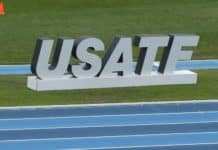While most of the focus in the Larry Nassar sex-abuse scandal has been on his employer, Michigan State University, and USA Gymnastics, where he served as the national team physician, the United States Olympic Committee has been a major part of the discussion.
While the USOC’s new chief executive, Sarah Hirshland, has begun the process of de-certifying USA Gymnastics as the National Governing Body for the sport in the U.S., a line of evidence showing the USOC as part of the problem was deepened last week in a court filing in the Raisman vs. USOC suit in California.
Multiple reports reviewed the filings, including a sworn statement from the 1994-98 President of USA Gymnastics, Kathy Scanlan. According to Reuters, “she had notified the [USOC] of sexual abuse within the organization soon after she took charge, but ‘little was done’ to address the issue.”
The New York Times noted further that Scanlan’s statement included “U.S.O.C.’s challenge to [USA Gymnastics] disciplining professional members in this fashion (specifically impeding the ability to ban, suspend or investigate a member) would have inhibited me from adequately protecting minor members.”
This further underscores the USOC’s history of inaction, which was previously dated back to Scanlan’s successor, Bob Colarossi, who “noted in a 1999 letter sent to the USOC that the USAG’s safety procedures regarding the abuse of minor athletes by their doctors and coaches were a ‘fundamentally flawed process’ and the committee had an ‘apparent indifference to the welfare of young children.’”
The suit will continue, but the true impact of these statements could well be heightened interest by the U.S. Congress, which is considering changes to the Ted Stevens Olympic and Amateur Sports Act, which governs the Olympic Movement in the U.S., including the rights, structure and prerogatives of the USOC.


























